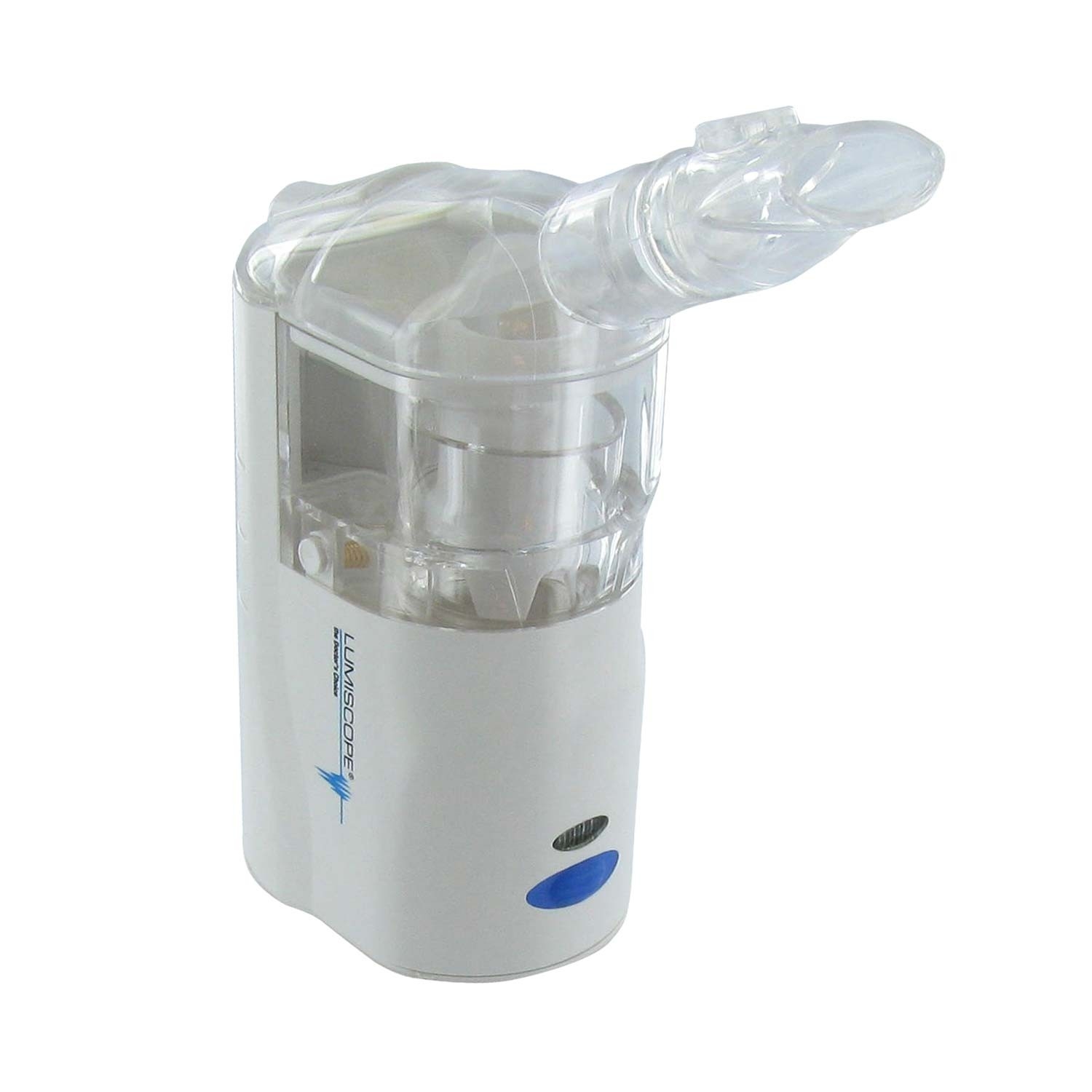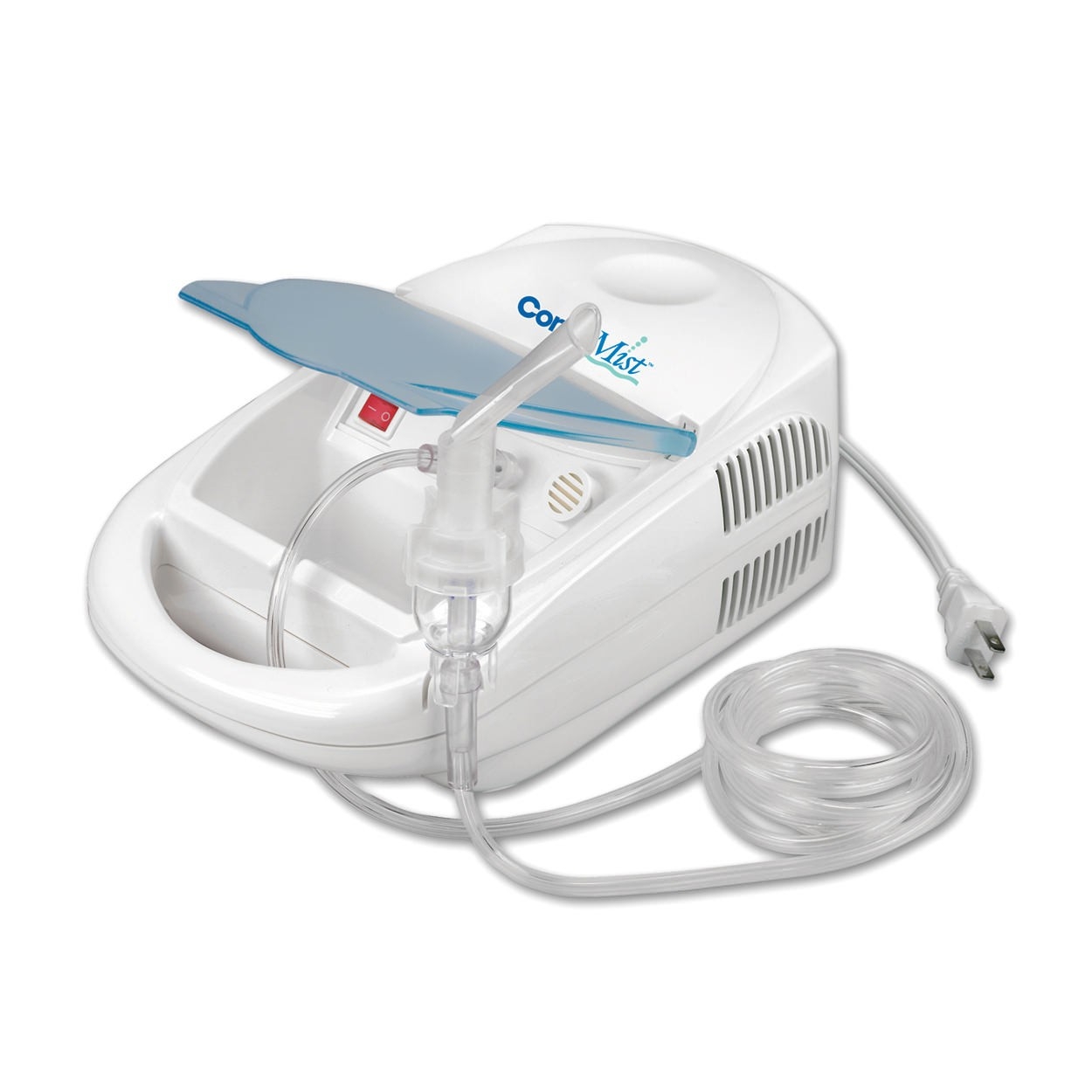How Does A Nebulizer Work? Functions, Purpose & More
Why do we need a nebulizer
For individuals coping with asthma, cystic fibrosis, chronic obstructive pulmonary disease, and other respiratory diseases a nebulizer will be prescribed as part of the treatment plan to control and ease respiratory distress. A nebulizer is a device used to convert liquid medication into a cloud-like mist that is delivered to the lungs via a face mask or mouthpiece. Compressor and ultrasonic nebulizers are two main types of nebulizers used to administer aerosol medication to the individual’s respiratory system.
Why ultrasonic nebulizer is better than compresor?
Research studies have shown the ultrasonic nebulizer to be a quicker, more efficient and more patient friendly method of treatment. Total time for nebulization by an ultrasonic is 9 minutes in comparison with 21 minutes for a compressor. One research study sought to compare the quantity of medication left after treatment from a compressor and an ultrasonic nebulizer. The study demonstrated that the total availability of the medication in the lungs was greater after treatment with the ultrasonic nebulizer.

How does a ultrasonic nebulizer work
Ultrasonic nebulizers work by producing high-frequency vibrations making waves in the liquid medication and creating a small fountain. This type of nebulizer is capable of producing a finer mist because of the vibrations enabling the medication to fully spread throughout the lungs. The small floating particles are administered to the lungs as a consistent, uniform, and fine mist. Solution medications such as Albuterol and Ipratropium may be used in the ultrasonic nebulizer. However, suspension drugs such as Budesonide may not be used due to the interaction between the suspension and the ultrasonic nebulizer. A suspension medication is a mixture composed of many large particles within a liquid, whereas a solution is a mixture composed entirely of liquid and/or dissolved solids. If a suspension drug were to be placed in an ultrasonic nebulizer the machine would not work properly, due to the limited break down of large solid particles within the suspension. For best results only solution medications may be used with ultrasonic nebulizer. Check out our web store at section nebulizers for sale to buy nebuliser.
How does a compressor nebulizer work
The compressor nebulizer works by producing a pressurized jet stream that propels medicated droplets out of the nebulizer through the tube and into the facemask. With the compressor nebulizer both solutions such as Albuterol and suspensions such as Budesonide can be used. The medication is drawn up through the tube and aerolized and the remaining larger particles from the suspension are trapped by the jet mask and left behind to be broken down into smaller droplets to be reused. The compressor nebulizer is therefore, capable of breaking down the large particles within suspensions. Choosing the proper nebulizer requires information from your physician; consult with your physician and/or pharmacist to find the type of medication and which nebulizer is best suited for your prescribed inhalation treatment.

Looking to purchase a nebulizer?
If you struggle with COPD, asthma, or allergies, an ultrasonic nebulizer can help you breathe better than ever before. Don’t wait another day. For a limited time you can save 25% on a medical-grade ultrasonic nebulizer, perfect for quick and timely relief. It is compact and easy to carry on the go, comes equipped with a 2-year warranty, and is virtually silent. To purchase, click here, “add to cart”, and follow the on-site prompts. If you have any questions, please do not hesitate to give us a call at 1-888-769-4827.
List of Suspensions
Budesonide (Entocort EC, Pulmicort, Rhinocort Aqua)
Use: prophylaxis for asthma
Metaproterenol (Alupent, Arm-A-Med, Dey-Lute)
Use: Asthma
REFERENCES
[1] Pulmonary deposition of nebulised amiloride in cystic fibrosis: comparison of two nebulisers. http://www.pubmedcentral.nih.gov/articlerender.fcgi?tool=pmcentrez&artid=463390
[2] European Respiratory Journal. http://erjs.ersjournals.com/cgi/content/abstract/10/4/905
[3] Functional Comparison of Inhaler Devices. http://www.medscape.com/viewarticle/408738-5
http://www.sonozap.com/nebulizer.htm
[4] Basic Nebulizer Function. http://www.ncbi.nim.nih.gov/pubmed/10147075
[5] Behavior of Nebulizing solutions and suspensions. http://www.ncbi.nim.nih.gov/pubmed/10147076?ordinalpos=1&itool=En…bmed_Discovery_RA&linkpos=5&log$=relatedarticles&logdbfrom=pubmed
[6] Nebulizer Basics. http://www.pulmicortrespules.com/professional/nebulizer-basics.aspx br/>
Disclaimer:
The information on this website aims to provide customers with relevant knowledge regarding our products. Under no circumstances should the information be used for therapeutic purposes. Customers must consult their doctors for the correct use of these information and products. ClinicalGuard.com is not responsible for any losses or accidents caused by the use of information on this website.

